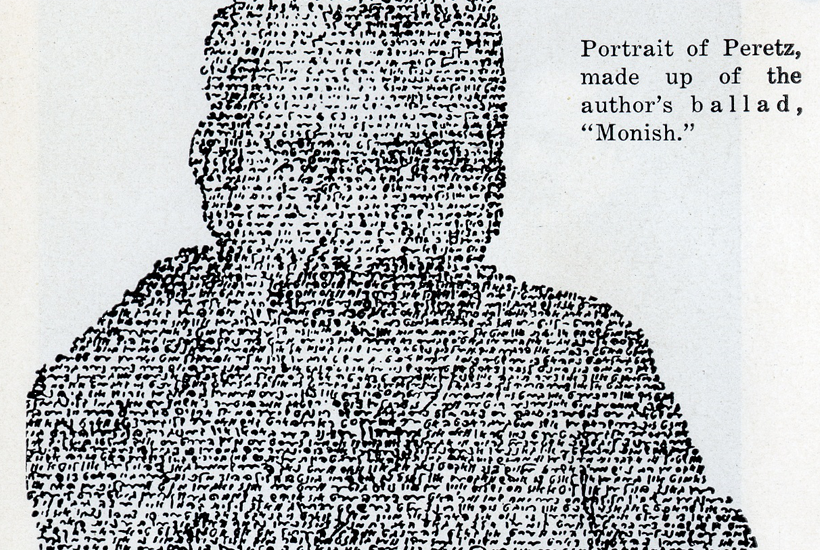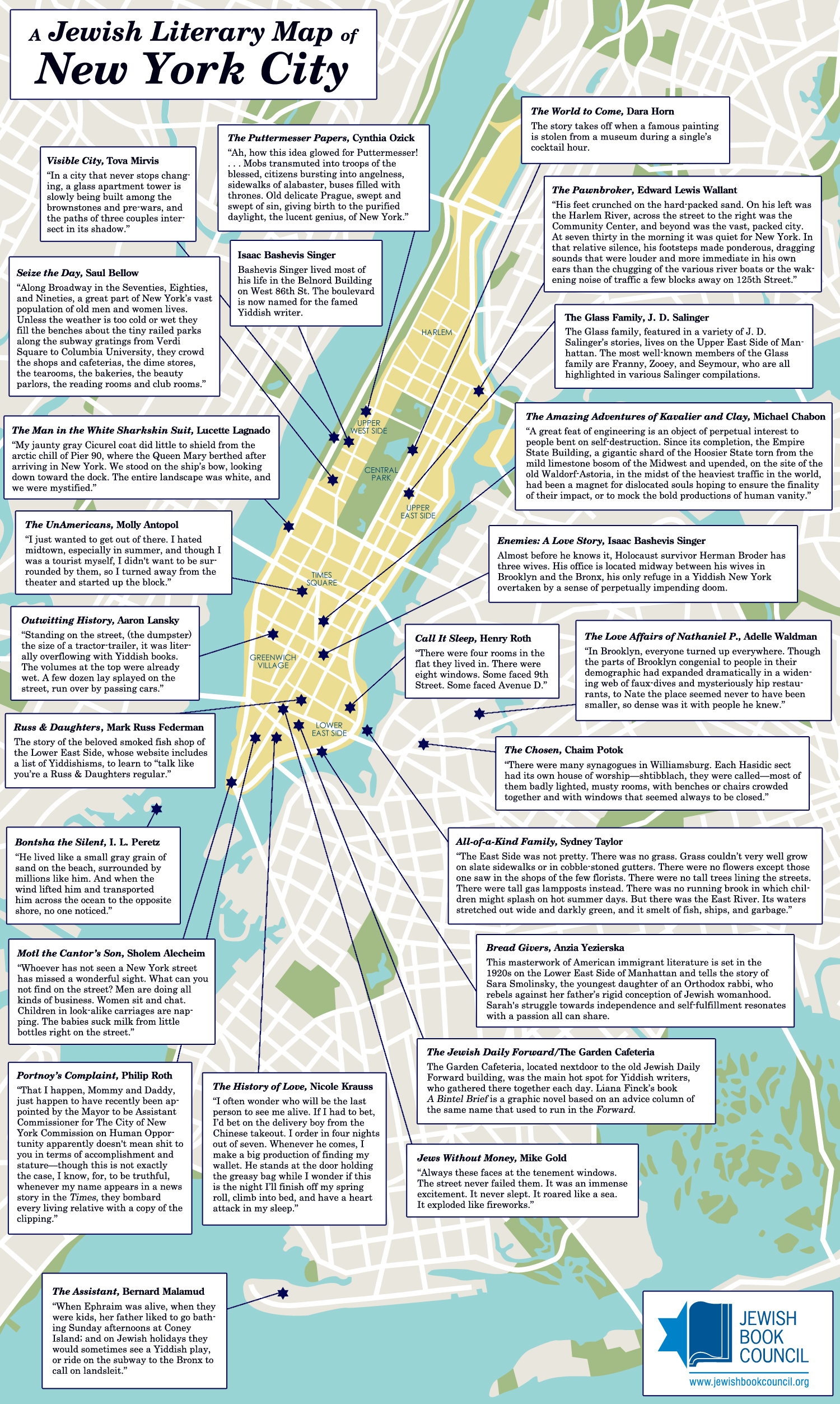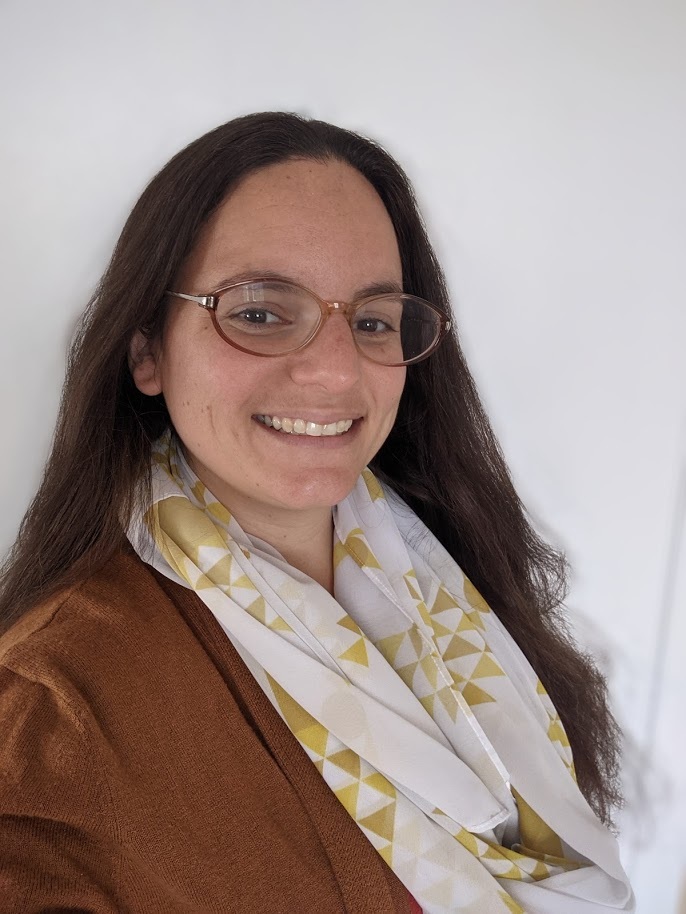Nov 28, 2016

Detail of micrographic portrait of Peretz. The image is comprised of the entire text of the poem Monish. (via YIVO)
INTRODUCTION
In an effort to pool the wisdom and questions acquired from our contributors’ work in the classroom, In geveb regularly polls Yiddish instructors on topics related to Yiddish pedagogy. The responses to these polls offer a cross-section of the opinions, approaches, and experiences of instructors from Los Angeles to Tel Aviv, from children’s programs to university classes to continuing education courses, from new teachers to those with a lifetime of experience. If you teach Yiddish, teach with Yiddish, or teach about Yiddish, add your voice to the discussion in our next poll, on Holocaust Studies and Yiddish. And if you want to share your opinion on the topic presented below, please do so! We may publish an addendum with new responses. If you are a teacher in a secondary or supplemental school setting and you teach with texts translated from Yiddish, please participate in this poll.
As Y. L. Peretz writes in his poem “Monish” (as rendered in English by Anita Norich), “My song [or “my poem”] would sound differently if I had sung for non-Jews in a non-Jewish language.” 1 1 This translation can be found in the following article: Anita Norich, “Lost in Translation: How to Teach Translated Texts - Teaching from Right to Left.” AJS Perspectives (Fall 2004), 12-13. So how do teachers bring texts translated from Yiddish into a non-Jewish language to their students, and how to they bridge the gap between the translation and the original for their students, demonstrating that the text sounds different in Yiddish, even when the students don’t know (about) Yiddish at all? In geveb is grateful to the teachers who responded to our survey and offered their thoughts, ideas, and strategies about teaching translated texts.
Preparing to Teach
Especially for teachers who do not speak or read Yiddish fluently, or for whom Yiddish is not a primary language of study, teaching texts translated from Yiddish can be a challenge. Shari Rabin (College of Charleston), who teaches texts from Yiddish such as the memoirs of Glikl of Hameln and I.L. Peretz’s story “If Not Higher” in her course on Modern Jewish History, explains that to prepare to teach these texts she reads background material on the author and the text in addition to the secondary material she assigns to her class so that she can better present the text in its context. Jessica Carr (Lafayette College) prepares to teach translated texts as she would other literary texts, “focusing more on character development and plot than on specific language choices” to ensure that her lesson can be understood by, and useful to, students who do not know any Yiddish. Her focus is not on the Yiddish language of the texts per se, but on the “different worldview” that texts written in different languages can convey to her students of Jewish religion, literature and history.
Teaching About Yiddish
Nevertheless, even for those whose focus is not on the Yiddish language itself, many instructors teaching from texts in translation feel that it is important to teach something about the Yiddish language to their students in order that students can better understand the texts. When she teaches her courses on Humor in Jewish Literature and on Jewish Literature for English Majors, Margot Valles (Michigan State University) introduces Yiddish language to her students through “other forms of media (video, art, music) that come from and refer to the Yiddish speaking world.” She also finds it useful to provide her students a “working vocabulary with tastes of Yiddish” that they can use as they refer to the text. When she teaches “If Not Higher” to her Modern Jewish History students, Shari Rabin also assigns Leora Batnitzky’s “The Transformation of Tradition and the Invention of Jewish Culture” in How Judaism Became a Religion. This gives her students some grounding in the history and ideology of modern Yiddish cultural production. 2 2 Leora Batnitzky, How Judaism Became a Religion (Princeton University Press, 2011), 130-146.
In his course on “Israeli Culture and Society: Literary Perspectives,” Eli Rosenblatt (University of California, Berkeley) says that teaching about the Yiddish language itself is central to the premise of the course. He explains, “I structure the course around the premise that Israel is a ‘multilingual’ society rather than a solely ‘Hebrew’ culture. Yiddish language and literature plays a foundational role in this premise.” For Rosenblatt, teaching about Yiddish is not only a matter of transmitting facts about the Yiddish language and its history. It also requires students to examine how they may “bring certain cultural biases [about Yiddish] to the classroom. According to one student, Yiddish sounded ‘ugly’ and ‘German’ while Hebrew sounded ‘Eastern’ and ‘holy.’” Without examining the cultural assumptions underlying this evaluation of Yiddish, the student would not be able to interpret and assess the text as fully.
Sean Sidky (Indiana University) explains that when he teaches texts translated from Yiddish in his Composition courses or in his course on the relationship between popular culture and catastrophe, he teaches about American Jews’ post-vernacular relationship to Yiddish. When he explains to students that the text was originally in Yiddish, he uses it “as an opportunity to discuss issues of cultural memory and nostalgia” among American Jews in their relationship to Yiddish-speaking Eastern Europe.
Representing Yiddish
Many people who teach with texts translated from Yiddish feel it is instructive to represent the Yiddish language in some way, even though their students may not understand it.
For some teachers, this is simply because there is an intrinsic value to students’ knowing what Yiddish looks and sounds like: Sean Sidky will occasionally project an image of the original text overhead while he is teaching from the translation, and Karolina Szymaniak (Jewish Historical Institute in Warsaw) always gives students the original title, writing it on the board in Yiddish characters and in transliteration. When he teaches Mendele’s “The Travels of Benjamin the Third,” Eli Rosenblatt brings in physical copies of the book in Hebrew and in Yiddish “so that students can hold each volume in their hands and flip through the pages.” He also reads passages out loud in Hebrew and in Yiddish.
For others, it is important to bring in the Yiddish language at moments when it is helpful to draw attention to the act of translation itself, and to its limitations. Saul Noam Zaritt explains that he brings in words from the original text when there is “a word or phrase the translator could not fully transfer, in particular those words with double meanings.” For Zaritt this is not only important for teaching about the Yiddish language, but also for enabling students’ nuanced understandings of the text itself. When he introduces specific words or phrases in Yiddish, Zaritt explains, “this involves saying the Yiddish word or phrase several times, writing it on the board in Hebrew letters and in transliteration.”
Karolina Szymaniak adds that in teaching poetry and prose in which the rhythm and sound are important to understanding the text, she will read a fragment aloud in the original. She also prefers to give her students bilingual versions of texts, especially in the case of poems, even if the students are not able to read in Yiddish.
Context and Background of the Text
In addition to information about Yiddish and about cultural attitudes toward Yiddish, when teaching a translation, many teachers find it important to contextualize the work itself. Margot Valles explains, “I try to remember the other ways in which Yiddish texts are difficult/need to be translated, apart from linguistic concerns: there are differences in time, place, religion, culture, even climate . . . ‘Translating’ these, or at least noting their alterity, helps students to feel that the material is either accessible or inaccessible for a range of reasons that are related to but not merely the result of the text being a translation from Yiddish.” To that end, Jessica Carr discusses with her students “the social, religious, and cultural roles [of the texts] in various geographic and political contexts,” and Karolina Szymaniak always gives the author’s biography and places the work “on different maps (Yiddish literature, Jewish literature, European, different artistic currents and trends, etc.).”

via the Jewish Book Council
Teaching About Translation
Many teachers who responded to our survey wrote specifically about their strategies for teaching about the process of translation itself. Shari Rabin accompanies the teaching of translated texts with Sarah Ponichtera’s essay, “The Problem of Materiality in Yiddish Translation.” Jessica Carr emphasizes that translations are interpretations and asks her students to be conscious that translators are making choices that create a certain “feel” in the translated text. For Sean Sidky, when teaching with translation it is important for students to respond to the question, “How does the fact that we are reading this in translation, without access to the original language, obscure the complex cultural differences that are being discussed here?”
Depending on the class and its needs, Karolina Szymaniak sometimes invites her students to “look more closely at the translation, comparing it with the original.” Karolina further explains that “Sometimes, if such a possibility exists, I provide students with different translations of the very same text. We either compare them in class, or I divide the class in groups and ask them to prepare an interpretation of the text and then organize a discussion in class, trying to see how time and place, literary tradition, ideology, gender, translation theory, etc., influence the translation and our reading. Sometimes we read together in class one version, discuss it and then I surprise the students with another translation that contradicts what we’ve just discussed. I like this moment of surprise a lot, it usually works very well for discussion.” When teaching from her own translations (published and unpublished), she writes, “I usually speak about the choices I made and how it influences students’ reading. And what I like and dislike about this version. We also look together for alternative solutions.”
Saul Noam Zaritt explains a strategy for teaching texts in translation that incorporates an idea of the translator as a part of the literary process itself: “When teaching a literary text I often call attention to the narrative techniques and layers of voices that make up the text. This allows students to be conscious of the translational act at the foundation of the text and see the translator as a participant in the event of reading/writing.”
Teach What You Can Find
Although several of the teachers who responded to our survey felt that they do not have trouble finding translated texts to teach, most teachers feel that they are limited to teaching whatever has been translated, and whatever is easily accessible. Teachers stumble upon pdfs of translated texts online or find them in anthologies. Several teachers mentioned that they specifically would like to see and teach with translations of texts written by women, texts written outside the supposed “centers” of Yiddish culture, nonliterary texts of historical import, and more translations with the original Yiddish text present. There are also many texts considered “canonical” that have yet to be translated. Teachers are “always searching” for new and better texts and translations to teach!
Lack of translations is especially a problem for those who teach in languages other than English. Karolina Szymaniak writes that she sometimes supplements with translations to English in her Polish-language classes, but that this often doesn’t work well.
Sharing Resources
The rich and detailed responses to our survey demonstrates that teachers are eager to share their thoughts and resources with one another, here are a few to start.
Offering us a more detailed peek into one teacher’s pedagogical toolbox for teaching texts in translation, Shari Rabin generously shared this worksheet that she uses in her teaching, in which she asks her students to respond to I. L. Peretz’s “If Not Higher” and integrate their reading of the story with their reading of two secondary sources: Sarah Ponichtera’s essay, “The Problem of Materiality in Yiddish Translation” and Leora Batnitzky’s “The Transformation of Tradition and the Invention of Jewish Culture.” In geveb recently published a worksheet by Feygi Zylberman for teaching about divorce to high school students using the film Hester Street. If you are looking for ideas for teaching translated texts, check out our Teaching Guide for Dik’s “Slavery or Serfdom” (Trans. Rosenblatt), the first in our series of guides for teaching translations published by In geveb. Our friends at the National Yiddish Book Center have also created lesson plans for several key works of literature at their Great Jewish Books Teacher Resources site.
Here at In geveb, we are eager to learn from those who are teaching translated Yiddish texts, as well as to create new resources for teachers to use, and to build a durable digital archive of pedagogical materials for teachers to work with. How do you teach texts translated from Yiddish? We hope you’ll share a lesson plan, syllabus, or activity you’ve designed! And, you can participate in our next poll, on Holocaust Studies and Yiddish.


